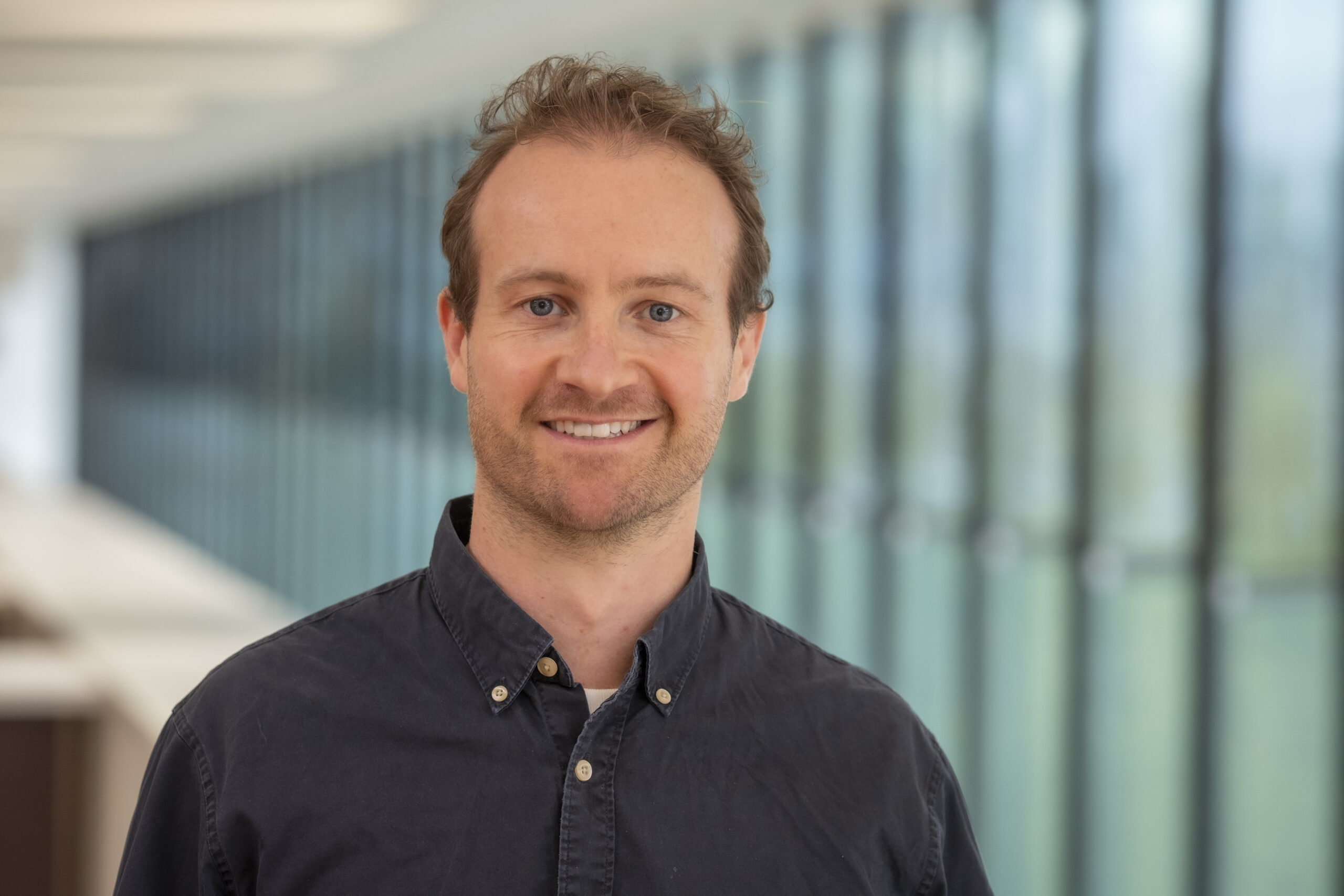ONDERZOEKER IN DE KIJKER
[177Lu]Lu-PSMA-617 in oligo-metastatic hormone sensitive prostate cancer
Interview with Dr. Bastiaan Privé, Radboudumc & ErasmusMC
- 24-09-2025
Can you explain shortly the goal and main findings of the BULLSEYE trial?
Up to 50% of prostate cancer patients who undergo surgery or radical radiotherapy develop disease recurrence. When salvage surgery or radiotherapy is not an option, the standard of care is androgen deprivation therapy. While androgen deprivation therapy is effective, it is often associated with significant side effects such as depression, fatigue, and cardiovascular disease. The goal of the BULLSEYE study was to evaluate whether patients with oligometastatic prostate cancer could benefit from treatment with [177Lu]Lu-PSMA-617 to delay the initiation of androgen deprivation therapy. The study showed that patients in the control arm had a progression-free survival of 5 months, compared to 25 months in patients who received [177Lu]Lu-PSMA-617. Additionally, 25% of treated patients achieved a complete biochemical response. Side effects were mild, and patients maintained a good quality of life.
In total you included 58 patients, a large number! How many centers were involved in the trial?
The study was a true team effort. In total, four hospitals participated: University Medical Center Groningen, Amsterdam UMC, Radboudumc, and the German Oncology Center in Cyprus. We collaborated closely and effectively. The Netherlands has an excellent infrastructure to conduct research together, and that is something we should truly value.
What were the biggest challenges you encountered during the study?
There were several challenges along the way. Securing funding and setting up the study was difficult, as is often the case. Recruitment was also stressful, and it was disheartening at times to see patients not responding or only for a short period. This highlights the need to further improve treatments so that more patients can benefit, and for a longer duration.
What was for you personally the most rewarding part of the BULLSEYE study?
Every step of the journey was rewarding from obtaining ethical approval, randomising and treating the first patients, reaching full recruitment, the data cut-off date, to finally seeing the results. It was also incredibly meaningful to receive support from all the co-investigators; this was truly a team effort. But perhaps the most rewarding part for all of us was helping patients and seeing so many of them respond positively to the drug.
Now you have completed the study, you have analysed the data and probably you will submit the full manuscript soon. What are in your opinion the most important next steps?
A phase III study will be needed. Such a trial is currently underway: the PSMA-DC study. This study is recruiting patients with oligometastatic prostate cancer and compares [177Lu]Lu-PSMA-617 combined with stereotactic ablative radiotherapy to radiotherapy alone. I believe radiopharmaceuticals will play a pivotal role in the treatment of early-stage prostate cancer – either as a stand-alone therapy or in combination, administered concurrently or sequentially.
Being invited at the ASCO to present your study findings is a real honour. What was it like to present at such a large conference?
It was a great honour to present the study on behalf of the entire team. It’s amazing to see that our work here in the Netherlands has the potential to make a global impact.
You study PSMA radioligand therapy, but most of your time is dedicated to become a radiation oncologist. What is the added value of combining these two expertises?
There is extensive knowledge in both fields of nuclear medicine and radiation oncology regarding the effects of radiation on healthy and cancerous cells. There is much we can learn from each other, and still so much to discover. My aim is to build stronger mutual understanding between the two fields and to combine the strengths of both specialties to improve outcomes for patients. In the end, from a patient’s perspective, it doesn’t matter whether they are treated by a nuclear medicine physician or a radiation oncologist, as long as they receive the best possible care.
If we look five years into the future, what do you hope to have achieved with your research?
My goal is to expand the availability of radiopharmaceuticals and improve patient selection through better pre-treatment and treatment planning, and to deepen our understanding of why some patients respond to therapy while others do not. Furthermore, I see great potential in applying radiopharmaceuticals earlier in the disease, and in combining them with external beam radiotherapy for tumours that may not respond adequately to radiopharmaceuticals alone.
Contact: bastiaan.prive@radboudumc.nl / b.prive@erasmusmc.nl

Bastiaan Privé is a radiation oncology resident at Erasmus MC and a postdoctoral researcher in nuclear medicine at Radboudumc, where he also completed his PhD. His current research focuses on theranostics in prostate cancer, with an emphasis on PSMA imaging and therapy in earlier stages of the disease. Recently, Bastiaan was invited to present the results of the BULLSEYE trial at the ASCO in Chicago.